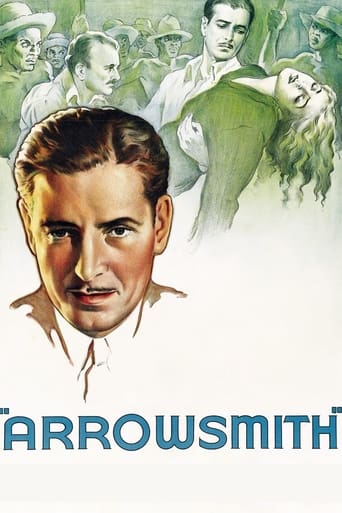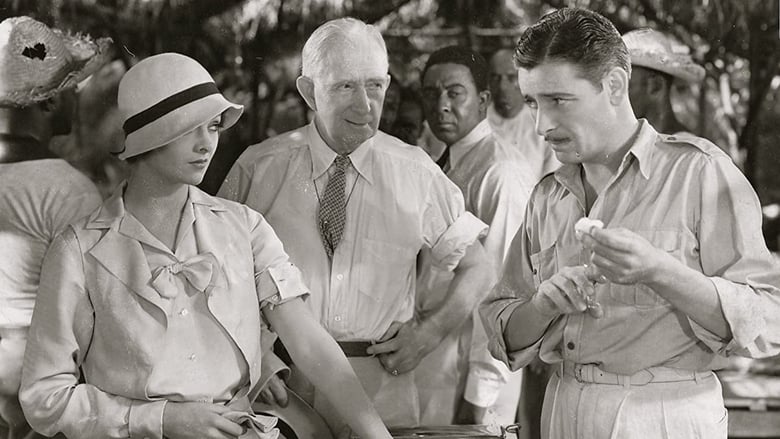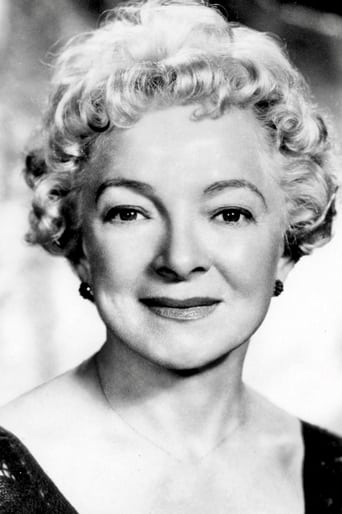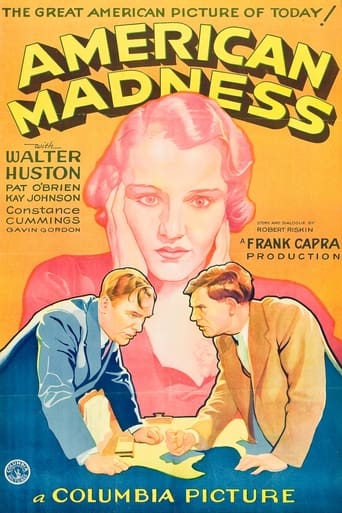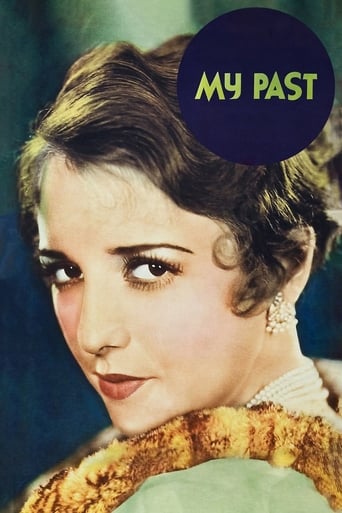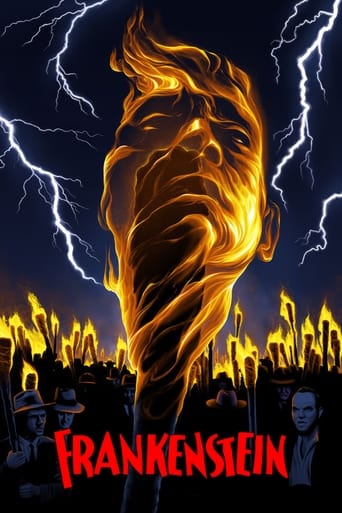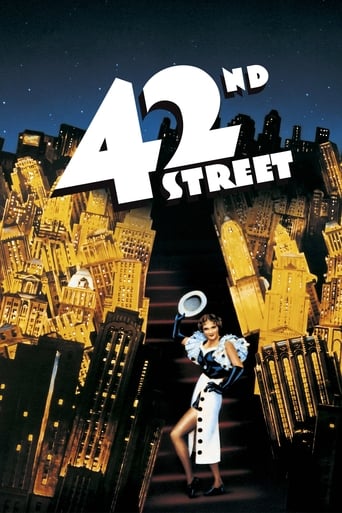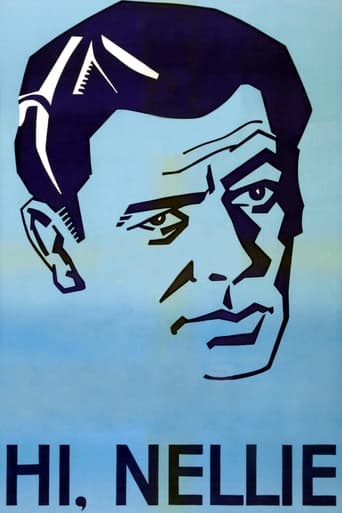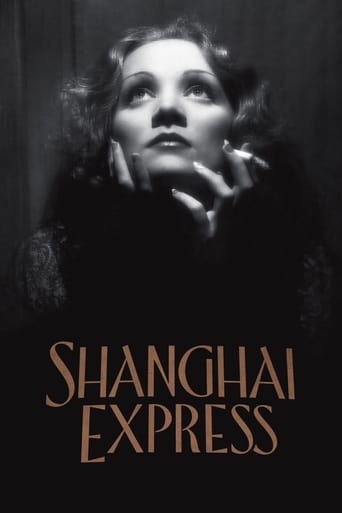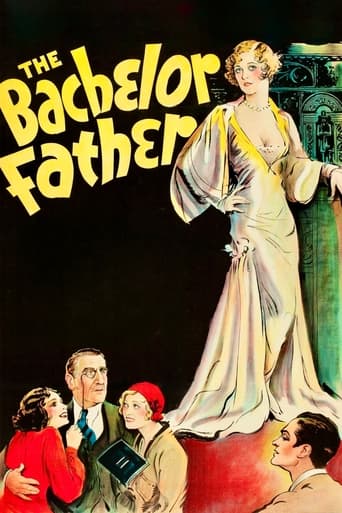Arrowsmith (1931)
A medical researcher is sent to a plague outbreak, where he has to decide priorities for the use of a vaccine.
Watch Trailer
Cast


Similar titles
Reviews
Best movie ever!
Fanciful, disturbing, and wildly original, it announces the arrival of a fresh, bold voice in American cinema.
if their story seems completely bonkers, almost like a feverish work of fiction, you ain't heard nothing yet.
The movie's neither hopeful in contrived ways, nor hopeless in different contrived ways. Somehow it manages to be wonderful
Produced by Samuel Goldwyn and directed by John Ford, with an Academy Award nominated screenplay from Sidney Howard (who finally succeeded in adapting Sinclair Lewis's novel for the screen), this is probably one of the weaker Best Picture nominees. Richard Day's Art Direction and Ray June's Cinematography give it a silent film quality which was probably responsible for it being elevated to such honors.But silent film star and outstanding British actor Ronald Colman was miscast as the titled idealistic medical student, Martin Arrowsmith, who marries nurse Leora Tozer (Helen Hayes) and settles down as a country doctor in her small Midwestern South Dakota town for a couple of years before he invents a cattle saving serum that earns him a job as a researcher working under his former professor, scientist Max Gottlieb (A.E. Anson) at the McGurk Institute in New York City.John Qualen plays an immigrant Swedish farmer, DeWitt Jennings and Beulah Bondi play Leora's parents, and Ward Bond plays a policeman - all are uncredited. Bert Roach did receive a credit as Leora's brother Bert, as did David Landau as the state veterinarian. Russell Hopton plays Terry Wickett, another scientist mentored by Gottlieb.After two years, Arrowsmith finally discovers something that kills microscopic bugs (e.g. bacteria), but is disillusioned when his employer Dr. Tubbs (Claude King) touts his success to the press prematurely; a French scientist had published the same results first. Arrowsmith's association with another scientist, Gustav Sondelius (Richard Bennett using a thick, if inconsistent accent), leads him to the West Indies where he works on a cure for the bubonic plague with Dr. Oliver Marchand (Clarence Brooks) and has an affair with Joyce Lanyon (Myrna Loy), though it's somewhat difficult to ascertain this fact by watching the edited film.Alec Francis plays Joyce's older husband, Twyford. Lumsden Hare plays Sir Robert Fairland, the Governor that wouldn't accept Arrowsmith's (really Gottlieb's) terms that only half the patients were to receive the serum whereas the other half would constitute the control group.Against her husband's pleadings per the danger, Leora travels with Arrowsmith to the West Indies where an accidental spilling of a liquid from a test tube containing a potent disease kills her while he's on a quarantined island with Joyce. Sondelius dies of the plague himself. Their deaths cause him to become reckless and intentionally violate his experiments by allowing the control group to have the serum too.Back at McGurk, the aging Gottlieb's mind starts to go (because of Arrowsmith's actions?), but the film ends optimistically as Arrowsmith rushes off to join his peer, and fellow researcher Wickett, who'd decided to leave the institute to work in a more isolated locale.
The student of medical school Martin Arrowsmith (Ronald Colman) dreams on becoming a researcher. He seeks out Professor Max Gottlieb (A.E. Anson) that promises the position when Arrowsmith is an undergraduate doctor. Meanwhile Arrowsmith meets the nurse Leora (Helen Hayes) and they fall in love with each other. When Prof. Gottlieb invites Arrowsmith to work with him in New York, he declines since the salary is not enough to support Leora and him. He marries Leora and becomes a countryside doctor. After a while, the frustrated Arrowsmith decides to move with Leora to New York to work with Gottlieb. Soon he is invited to go to a Caribbean Island where there is an outbreak of bubonic plague to test a serum he has developed in the population and Leora decides to go with him despite the danger. Will Arrowsmith succeed in saving the inhabitants? "Arrowsmith" is a deceptive film directed by John Ford. The story seems to be incomplete missing explanation, for example, about Mrs. Joyce Lanyon, performed by the gorgeous Myrna Loy. The relationship between Arrowsmith and his wife is also underdeveloped. Ronald Colman is too old for the role of a young idealistic doctor. Maybe the viewer that has read the novel may like this film more than one that has never read it. Last but not the least, the Brazilian title is awful. My vote is five.Title (Brazil): "Médico e Amante" ("Doctor and Lover")
Goldwyn prestige at its stateliest, with John Ford direction and a Sidney Howard screenplay from a famous Sinclair Lewis novel. It means to be a serious look at the corrupting influences on the medical profession--interestingly, it tells a story not unlike, and with the same ending as, Rodgers and Hammerstein's "Allegro." It's hardly exciting, however, and the deliberate pacing makes one impatient for more to happen, faster. You're also asked to believe a fortyish Ronald Colman is a twentyish medical student, that he has an impeccable British accent though he's solid American stock, and that he and Helen Hayes would meet cute and fall in love cute, in a few hours. (She simpers a lot, and though she's excellent a year later in "A Farewell to Arms," here she's mostly annoying.) Ford's work is a little over-obvious here--note that close-up of the poisoned cigarette, killing any forward plotting for the next half-hour. Compensations include Myrna Loy, playing an honest and appealing upper-class lady at a time when studios were mainly casting her in Oriental-floozie roles, and a rare portrayal of an African-American doctor who's smarter and more dignified than anyone else among the dramatis personae. The production design's nice, too. If only there were more drama, and if we believed it more thoroughly.
Goldwyn put together a lot of fine talent here, but none of it jells.Ronald Colman, Laurence Olivier's idol and one of the screen's most likable actors, is just plain miscast. Helen Hayes projects annoyingly to the audience, stage fashion, rather than letting the camera discover her emotions, as even the young Myrna Loy knows how to do. Richard Bennett is enjoyably over-the-top as Sondelius but A. E. Anson's accent is a deal-breaker as Gottlieb (as if there weren't enough real Middle European actors in Hollywood at the time).Sydney Howard's script is condensed to the point of silliness - the other reviewers here who contrast "Gone With the Wind" as a model of condensation are praising an uncredited Ben Hecht, not Sydney Howard. Ray June's fluid cinematography is beautiful throughout, with more than one shot that would wind up re-used in Ford's "The Searchers" many years later.The story is that Goldwyn hired a bibulous Ford on condition that the director couldn't take one drink during production. Helen Hayes noticed that as the shoot progressed, Ford started discarding pages and then whole scenes, in a race to finish the film and get back to his booze. That may be one more reason that the film is barely coherent.Hey, nobody's perfect all the time.

